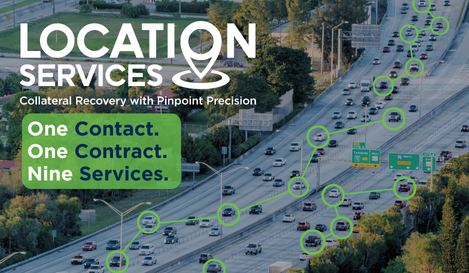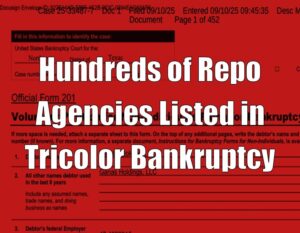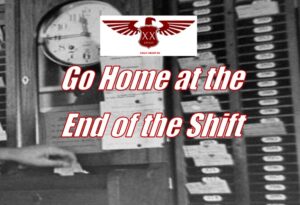Written by Steve Schroeder as part of the ALS Resolvion Insights Series
Statement of the Problem
Several factors converge to cause current and future constraints in the repossession industry that will impact lenders, forwarders (also known as repossession management companies) and agencies alike. These factors will continue to increase in relevance over the next five to ten years placing further pressure on the industry.
These factors include:
- Increasing State and Federal Regulation
- The accelerated increase fuel, insurance, and manpower costs
- Increasing traffic congestion in major metro areas resulting in an increase in manpower costs
- Lower margins in agency business resulting in innovation stagnation
Let’s review these factors and their resulting impact on the industry. In a recent study (IBIS World)[i] the following industry trends were identified:
- Over the last 5 years, repossession industry revenue grew 4.4 percent
- Number of businesses declined by 6.6 percent
- Number of employees declined 2.2 percent
- Total number of people employed in the industry estimated at 13,928
- There are between 1.2m and 1.9m vehicles repossessed each year
Regulations: The repossession industry has undergone tremendous change over the last ten years with the introduction of stringent state and federal regulation around repossession practices. These changes have resulted in a dramatic curtailment of the flexibility and methods available to field agents to perform repossessions. They have also introduced an increase in time and effort on the part of the agency and the field agent to comply with the regulations.
Rising Costs: Costs at the agency level are increasing at a faster rate than in prior years as a result of insurance premiums, increased fuel costs (in part due to traffic increases), and manpower costs due to minimum wage laws and an increase in “skills needed” to comply with regulatory requirements.
Traffic: Increasing traffic in the major metro areas of the United States dramatically impacts the time it takes to execute on a repossession. From investigation of an assignment to the time it takes to deliver the vehicle to a secure lot. Traffic in the major metro areas is forecast to get dramatically worse over the next ten years. In 2018 the DOT estimated that the average person of driving age lost 42 hours stuck in traffic jams, spent $160B in fuel costs, $28B in cost of truck transport. These numbers are projected to continue to increase (DOT).
Low Margins: Lower margins in business means less money is spent on innovation. The state of the software available to the repossession industry is behind that of most industries. One major factor for this is that with low margins there is less likelihood for larger consolidation plays (a fractured industry). Furthermore, with low margins small businesses do not have the resources to invest in innovation. To compound this, fees the repossession industry used to include in their revenue model are being reduced and eliminated.
Innovations in Repossession
Only two possible outcomes can evolve from the convergence of these factors. The two options include either a rising cost of the fees paid to repossession agencies (to drive investment, staff growth, new entrants) or for innovation to reduce cost and improve efficiency on a per assignment and per repossession basis.
Innovation: In recognition of the converging factors that will seriously constrain the repossession industry over the next five years, the first ever model to improve the efficiency of the assignment and repossession process was developed.
LocateScore was developed with the sole goal of segmenting repossession assignments into categories of potential for success. By segmenting appropriately, several minor adjustments to the repossession process can offset a wide spread constraint in available resources and result in higher recovery rates.
Let’s explore the implications before jumping into the numbers.
- Current Market: All assignments have an equal likelihood of recovery
If this hypothesis holds true than there is no efficiency to be gained in the repossession industry and the only alternative is rising costs. The best method is to “drive” assignments until either the asset is recovered, or enough time has passed that the borrower is treated as a skip and subsequent research is performed.
The impact of this assumption at the agency level is that after one to three runs the assignment must be “discarded” by the agency to make room for new business which arrives on a flow basis. The equivalent of having a dam filled with water. An equal amount of water must be let out as is coming in once the dam is full. Keep in mind that repo agencies consistently run at full capacity.
- LocateScore Alternative: All assignments DO NOT have an equal likelihood of recovery
Let’s assume that not all assignments have the same likelihood of recovery and that we can determine likelihood prior to making decisions, allocating manpower, fuel, and assets. With this knowledge, additional decisions become available to lenders, forwarders, and agencies.
Lenders:
With this knowledge in hand lenders can make process and financial decisions starting at the early stages of delinquency through to default and vehicle repossession. Prior knowledge of “easy” vs “difficult” repossession allows for pathing of the early stage delinquency events.
- Workflow: Different workflows for early stage delinquency based upon forecasted costs for associated repossession difficulty.
- Pricing: Tiered pricing of repossession assignments can be used to get priority within the agency for low likelihood recoveries
- Skip: Shortening the time before moving an assignment into skip.
- Scorecards: Adjusted scorecards for the type of business an agency is given
Forwarders can leverage this information in many ways as well. From client management, skip timing, agency management, internal process optimization. Exploring a few implications for a forwarder renders some interesting discussion items.
- Customer analysis: What work profile is a customer providing and what are the internal cost implications?
- Internal Process Control: Timing events between moving business from one agency to the next and timing for move into the skip department. LocateScore can give forwarders a meaningful discussion point with clients as to when an asset needs to be moved to skip.
- Challenges: Even with a verified address, recovery can still be difficult (gates, high density parking, garage size).
Repossession and Agencies:
Agencies can leverage this knowledge to adjust the allocation of manpower, assets, and run frequency. By choosing to focus and spend additional time on “high likelihood” opportunities, repo agencies can increase their recovery rates and profitability.
Usage at an agency level does raise many potential industry side effects. Lenders and forwarders will need to have the same knowledge in order to address these side effects.
- Resource Shift: Focus on “high likelihood” assignments will reduce manpower on the low probability assignments. Lenders and forwarders will need to have knowledge of this and move low probability cases to skip sooner and address the low probability cases through pricing.
LocateScore Performance
Extensive testing has been performed on sources from lenders, skip companies, and forwarders. The predictive power of LocateScore ranges from 200 to 600 percent magnitude in recovery rates from low score to high scores. Exploration of this performance is detailed further.
Low Scores: Low LocateScore results have substantially lower recovery rates than mid and high scores. Average recovery rates for this category are in the 5% to 8% range across several lines of business. These scores do not mean that they are not recoverable. Through skip efforts and “talking” the borrower into relinquishing the vehicle these accounts can be successfully closed.
This group of scores consists of approximately seven percent to ten percent of all assignments. Evaluating the impact of these low scores on agency performance (estimated 5,000 operating field agents x 7% & 10% = between 700,000 to 1,000,000-man hours per year) spent on these assignments based on a single assignment to one agency. Additionally, fuel expenditures are estimate at $3 per man hour for a total of $2.1m to $3m.
Repurposing manpower and assets on mid and high LocateScore results would produce between two to three times as many recoveries for the same manpower allocation. In other words, result in a five percent to ten percent increase in recovered vehicles.
Middle Score: LocateScore result that lands in the middle of the range are expected to perform at rates equivalent to an unscored pool of data. These scores will operate as would a business that did not have prior knowledge of the LocateScore value.
High Scores: High LocateScore results have between a 40% to 50% increase in recovery rates over unscored averages. A subsequent analysis of unsuccessful recoveries within this group is warranted to understand the value of multiple attempts on these locations.
Conclusion
The LocateScore model helps predict recovery success prior to any manpower allocation, skip tracing efforts, or data gathering process. This knowledge can best be used for changing business, financial, and workflow methods around the Low LocateScore group.
While LocateScore has immediate utility for all three participants (lender, forwarder, and agency), of equal importance is understanding that other companies may have the information and may be changing business practices. This has the potential of negatively or positively influencing an “uninformed” participant in ways that are hard to predict.
As of this writing, there are over 80 agencies equipped with this information and a percentage of them that are making decisions based upon this knowledge. Furthermore, there are multiple forwarders and lenders in the process of testing and evaluating how to best leverage this information. LocateScore is already available to lenders, skip tracing companies, and repossession management forwarders using the MasterQueue system.
By the end of 2019, it is estimated that several top lenders may alter pricing based upon this knowledge to ensure that their “Low Score” subset gets proper attention in forwarder, skip tracing, and agency handling.
Written by:
Steve Schroeder
LocateScore.com
(916) 304-4640
[i] IBISWorld, “Repossession Services Industry in the US,” accessed January 30, 2019. https://www.ibisworld.com/industry-trends/specializedmarket-
research-reports/advisory-financial-services/other-outsourced-functions/repossession-services.html
Using Data Analytics to Predict Auto Repossession Success – Using Data Analytics to Predict Auto Repossession Success – Using Data Analytics to Predict Auto Repossession Success
Forwarder – Repossess – Repossession – Repossession Agency – Repossessor –
















Facebook Comments